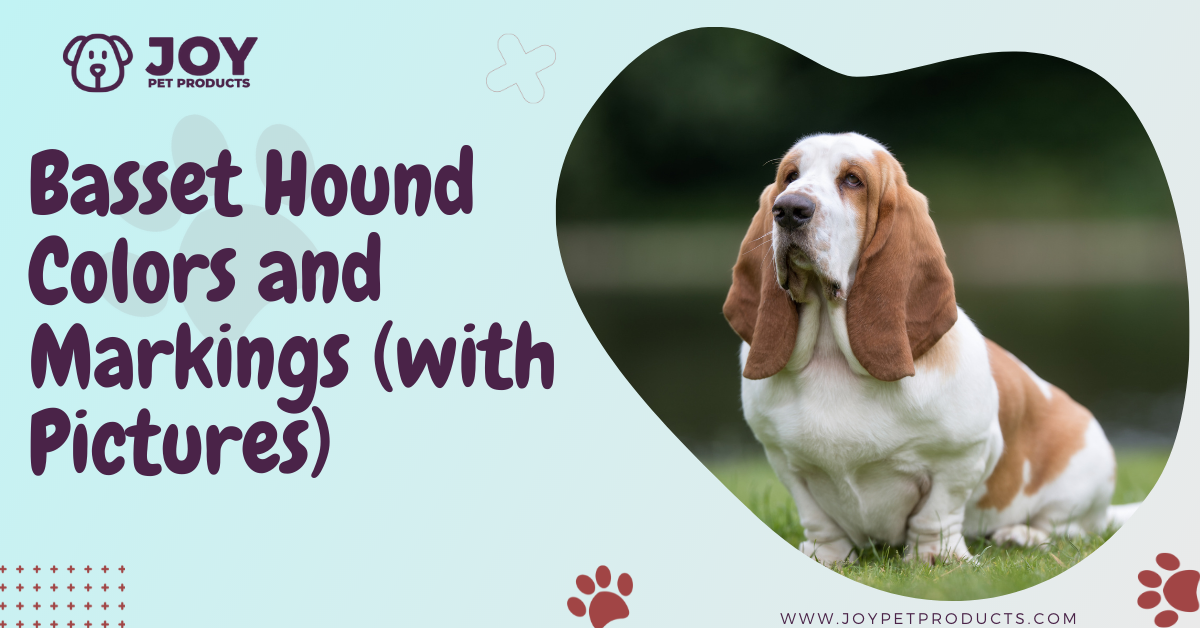We all love our cute furry canines, don’t we? Basset Hounds are one such cute dog that you just can’t resist. These dogs have one of the kindest eyes and are known for their loyalty and alertness. But, before going all-in, you must know everything you can about your pet to make an informed call.
One important aspect of owning a basset hound is to pay attention to its colors and markings. You might think of it as a petty aspect, but it’s actually not! So to know all about Basset Hound Colors and other specifications about this breed, keep reading!
About The Breed
Bassets have a huge, arched forehead with exceptionally long, silky ears, melancholic eyes, and a wrinkled face. It actually looks like a sad clown (See Picture!). The Basset glides in a quirky way rather than walking smoothly.
This breed is built for endurance rather than speed, so slow walks are always one of the favorites. The breed’s smelling skill is astounding, so much so that they give Bloodhounds a run for their money. Bloodhound’s nose is more accurate among dogs, but the Bassets, too, are pretty good in that regard.
While mild and amiable at home, the Basset is obstinate when outside and barks in a robust and ringing voice.
They are not very affectionate superficially. Still, the alertness and a fierce protective instinct for their owners are always there in them.
Why Do Basset Hound Colors Matter?
Colors are an important component of owning a dog, especially a basset hound. It’s not just the aesthetic part that matters.
While according to the American Kennel Club, having a basset hound of any color is fine, you should keep in mind that certain colored members can have deficiencies and defects.
A specific blue-colored basset has a genetically recessive trait that makes it prone to some diseases. Therefore, these bassets are unattractive as pets. Similarly, bassets with a whitish mark on their backs aren’t visually attractive and appear skeletally diseased.
All About Basset Hound Colors And Markings
Basset Hounds are primarily found in white, black, tan, or whites. Their coloring and extent may vary. The combination is mostly tricolors (black, tan, and white) or bicolor (tan and white).
Tans can range from dark red to lemon. Lemon and white is a less common color combination. Some Bassets are also classed as gray or blue, an uncommon and undesired hue in the paddock.
Here is the complete range of Basset Hound Colors:
Colors of Basset Hound
S stands for standard colors, and A is for alternate colors.
- Black & White (S019)
- Lemon and White (S115)
- Mahogany and White (S130)
- Black, Tan, and White (S030)
- Black, White, and Brown (S031)
- Black, White, and Tan (S034)
- Red and White (S146)
- Black and Brown (A009)
- Black, Red, and White (A027)
- Blue and White (A045)
- White and Lemon (A211)
- White and Red (A214)
- White, Black, and Brown (A360)
- Blue, Tan, and White (A291)
- Black, Brown, and White (S022)
- Brown, Black, and White (S064)
- Brown and White (A063)
- Tan and White (A197)
- White, Black, and Red (A361)
Significance Of The Colors
We’ve already established that the color of a Basset Hound is an essential part of their health and personality. Take a look at the pictures below to check out what different colored hounds look like.
1. Black

Don’t be surprised when you see an all-black Basset Hound. They may be rare, but they do exist. Usually, black Basset Hounds have a strip of different shades like gray or white that makes up for the markings and make them stand out among the crowd.
2. White
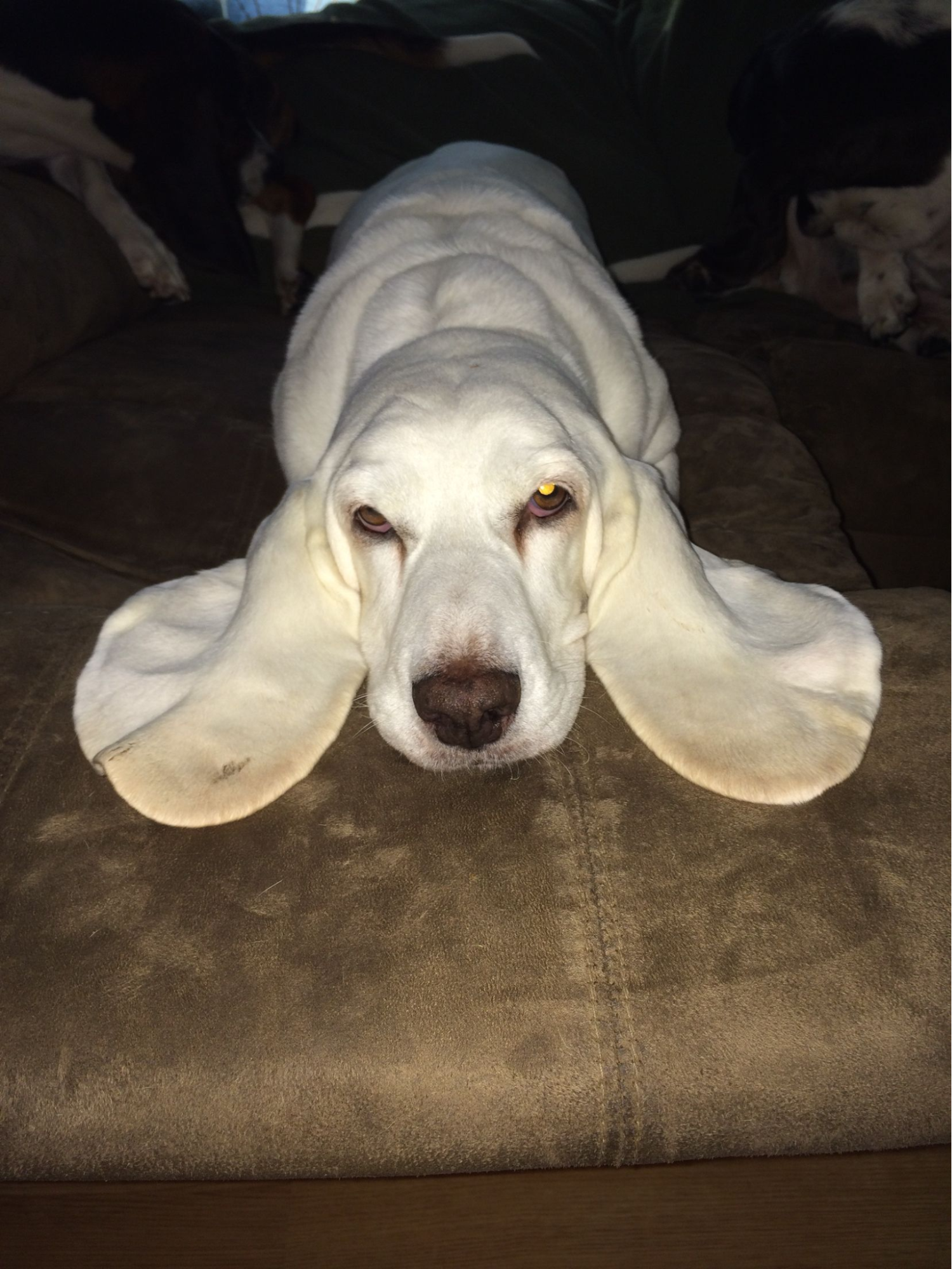
Much like the black Bassets, it’s rare to find an all-white Basset Hound. Mostly, the white ones are in demand because they come up with tan, brown, even black markings. Apart from these usual ones, you can also get Albino Bassets, which lack pigmentation and hence are grayish-white in color and texture.
3. Lemon
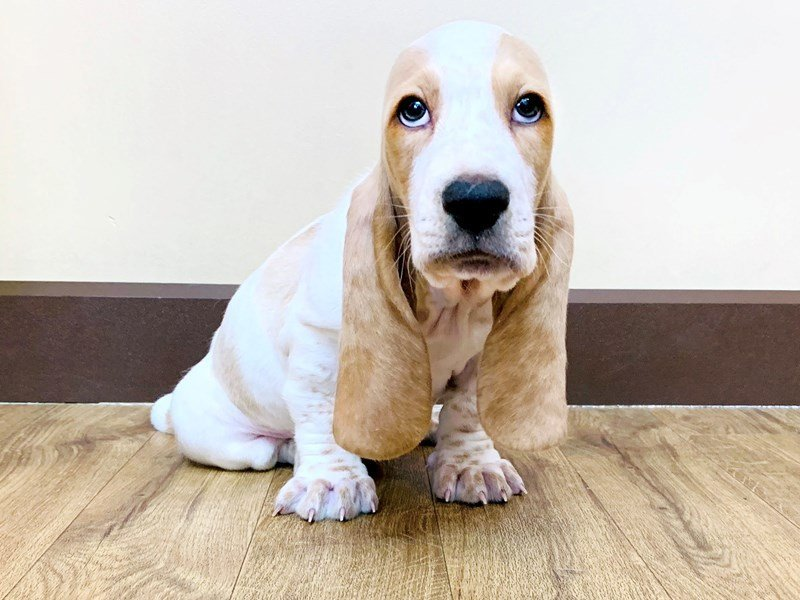
This shade is not particularly lemon but a certain shade of pale yellow. These hounds are just like the Albino hounds that lack tan pigmentation. In some of them, the patching is not on the whole body but a certain portion of it.
4. Tan

The tan shade of a hound is just a notch higher than the shade of Lemon. This tan shade is somewhere between the black and white shades. It is closer to Brown than lemon or yellow.
5. Brown

The chocolate Basset Hounds are one of the cutest breeds among the pets. Their shades include honey, hazel, chocolate, and liver. All of these are quite popular within Dog Shows.
6. Red

The red shade is actually brought in the Brown Bassets because of the Black present in them. The Black pigment is what makes their shade more of a mixed brown and dark red shade.
7. Mahogany

The dark brown and red blend is what gives some of these Hounds the shade of Mahogany. The best way to distinguish them from the Tan and Brown ones is to check for the Black undertones. Usually, a Mahogany Basset lacks the black undertones.
8. Blue

Blue may sound exotic, but it isn’t exactly the blue shade you are imagining. Blue Basset Hounds are more of a unique shade of pastel gray that gives the appearance of a metallic gray-blue hue.
Markings
A Basset’s short-haired coat is smooth and velvety, yet it sheds regularly. Their colorful, patchy coat lasts longer even after all of the shedding. Apart from them, they have musty, oily skin and secrete a peculiar Basset scent because of this.
Marking location is particularly crucial to the famous hush puppies. These markings make great dog show contestants because markings give them an optical illusion while they walk or jump. Some of the markings that are found in bassets include:
1. Black Markings (A002)
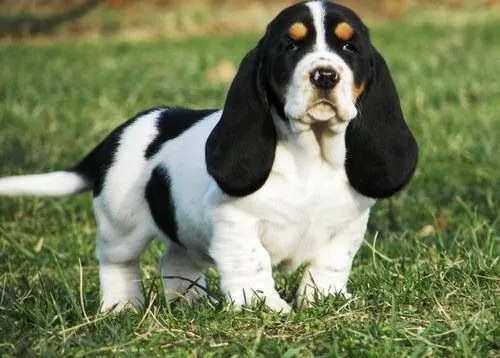
Black markings are pretty common. Even in an all Albino body, you might find one almost black sheet running through the particular part giving the dog a distinguished look. These are found in tan and blonde dogs but are more prominent in the ones with a light coat.
2. Black Mask (A004)
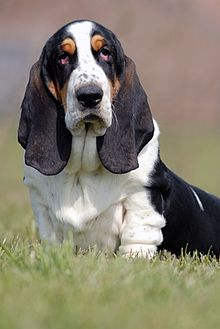
As the name suggests, a beautiful shade of Black masks the eyes of the Basset. Imagine the mask of Zorro and now imagine the same on the cute Basset’s face. This black mask looks just the same. The mask is found in all tan, brown, mahogany, and other variants, with the mask extending from the nose to the forehead.
3. Ticked (A013)
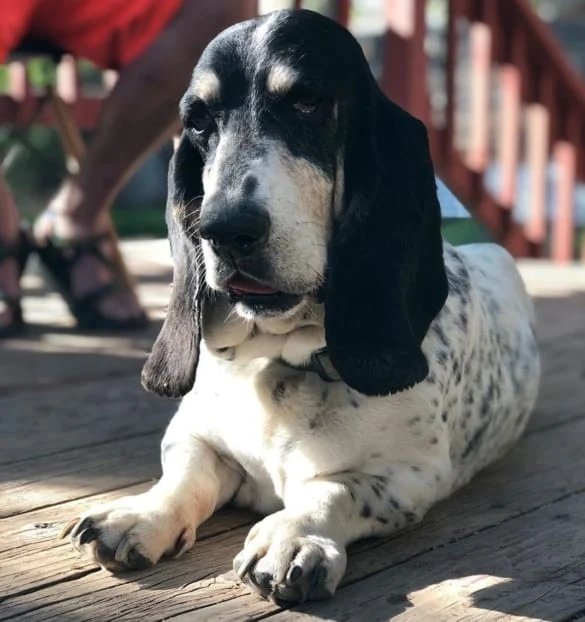
Tickings are usually found in white, albino, and black hounds. The marks are tiny vague spots all over their body. You might find these spots vaguely similar to that of Dalmatians.
4. White Markings (A014)
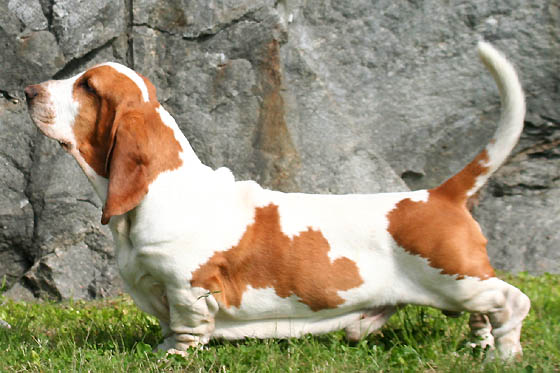
Just like the black markings, white markings also cover the pigment-less areas of your dog’s body. This is usually found in the dark-colored variants like black, tan, brown, etc.
Types of Basset Hound
The Bassets vary on different levels due to the place they were bred and their type of markings. Here are some distinct Basset types:
1. Classic Basset Hounds

These are the most common basset hounds that everyone associates with keeping as a pet. Basset hounds are an intriguing mix of many personality traits. There are both long-haired and short-haired basset hounds. Some bassets have more skin than others, while others have a slim frame.
2. Grand Basset Griffon Vendéen

Grand Basset Griffon Vendéen make an excellent family companion since they are calm and easygoing canines. These bassets typically scream when they wish to notify others or are left alone for an extended period.
On the other hand, their drooling and shedding might be a source of anxiety for their human counterparts. Their tenacity and solid build, along with their ragged appearance, set them apart from other Basset varieties.
3. Petit Basset Griffon Vendéen

Petit Basset Griffon Vendéen is a delightful breed that captures the heart with its sweetness. These adorable tiny canines were named after the town where they first appeared.
Petit Basset has a curly coat that requires minimal maintenance and upkeep.
They have a lovely and disheveled coat that makes them look cuter than the rest. Petit Basset is well-known worldwide for its friendly demeanor and petite affectionate physique.
4. Basset Artesien Normand
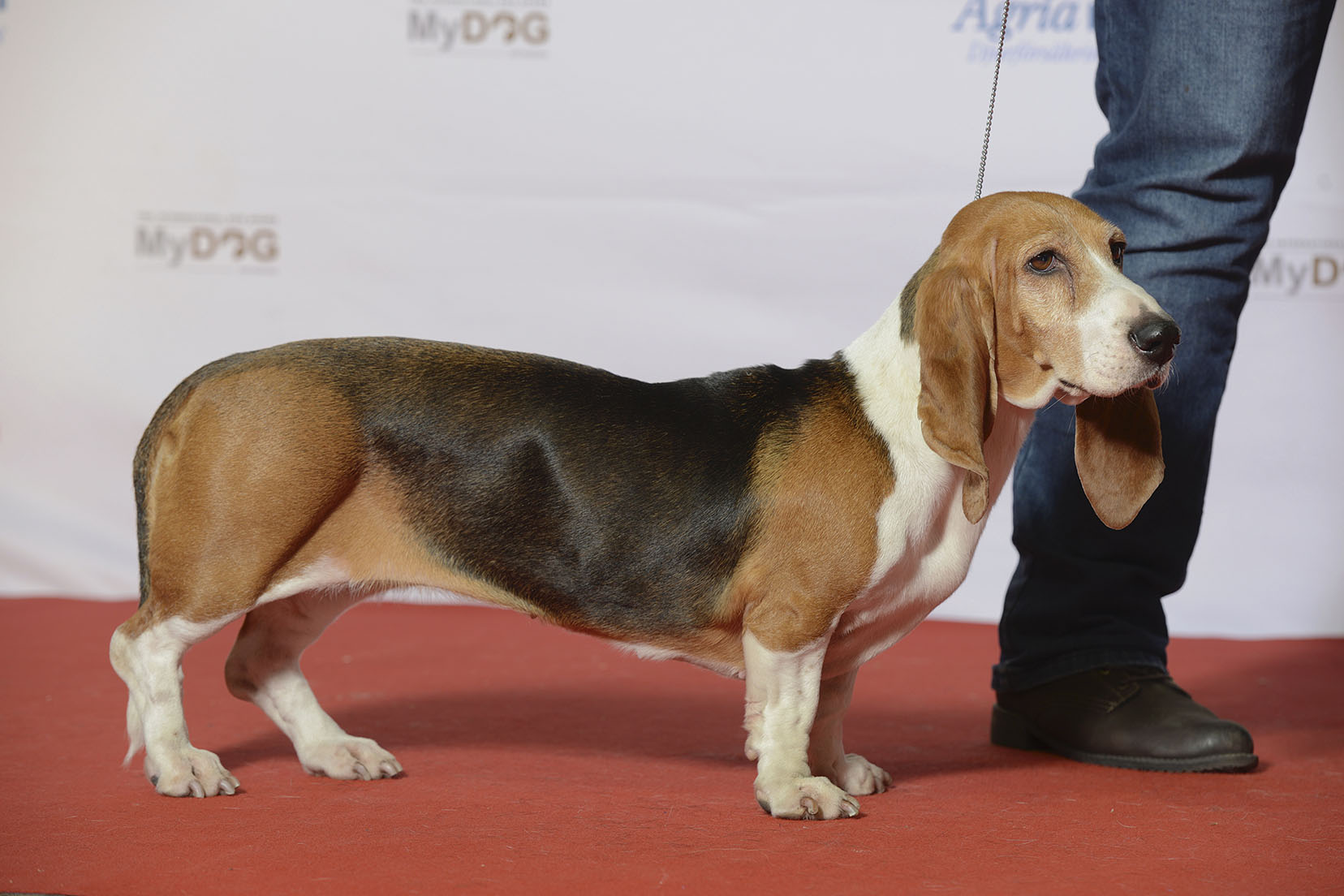
Basset Artesian Normand is a robust and physically active individual who can adjust well to living in a tiny apartment or having access to a smaller yard to play on.
Like other hunting dogs, they would run after any fascinating smell for hours, if not days. So, to keep them involved and avoid behavioral difficulties, it is best to offer them enough training.
5. Basset Bleu De Gascogne

The rhythmic howls and growls of all Basset Bleu De Gascogne are their most distinguishing characteristics.
Basset Bleu is a scent hunting hound that is great for keeping up with hunting. Even if the smell trail is faint or several days old, they can readily trace it.
6. Basset Fauve De Bretagne/Brittany Bassets

Brittany Basset, also known as Fawn Basset, is the breed’s most lively member. They were born in the historical kingdom of France. Their appealing fawn hue distinguishes them from scent dogs.
Fawn Bassets are little in stature yet stocky in form. The rough-coated tiny physique contradicts actual agility. Basset Fauve is well-mannered and a delight to be around children and family. They get along well with other pets.
Advantages Of Petting Basset Hounds
Basset hounds make excellent family pets due to their calm and adjusting demeanor. They are described as patient, amiable, low-key, and dedicated to their owners. To add more to their amazing pet energy, below are some other benefits of petting them. Take a look!
- Low Maintenance: Unlike other woofers, this breed needs more alone time from its owners. Yes, they need timely food, primary health care, and proper sleep, but you will be free to take them for runs, fussy diets, or other concerns.
- Good Natured: Basset hounds are too laid back to act as hyperactive pets. Once trained, they would be one good-natured and obedient pet with which you can enjoy some quality time. They may get startled by strangers, but the reaction would be excessive.
- Less Shedding: Their coat is short and single-layered, so Bassets shed very low, unlike other hounds. Even during the winters, the shedding will be very low if you keep combing their furs properly.
- Good Watch Dogs: Despite being laid back, these dogs are vigilant and devout to keep the intruders out. They constantly observe and note changes around them, making them good watchdogs.
- Pet Show Champions: Bassets have cute and unique markings making them one of the best show dogs. Once trained, they feature in several shows and programs with lush, shiny hair and different patterned bodies.
Conclusion
Basset Hounds’ no-nonsense characteristics make them the best fit for almost everyone. Their excellent disposition makes them wonderful pets, although they are prone to obesity and may be obstinate while tracking. Weigh the pros and cons of petting a basset hound to ensure that the breed is a good fit for your lifestyle. Take help from the info given above, and we guarantee you will do great as a dog parent.
Elena Gherman is a highly skilled and knowledgeable animal care expert. At the start of her career, she gained practical expertise with multiple animals. In addition to that, she works as a DVM veterinary editor for Joy Pet Products, which focuses on offering reliable information on pet health and wellbeing. She meticulously reviews each piece of writing before it is published to make sure pet owners get the most precise and updated information possible.
